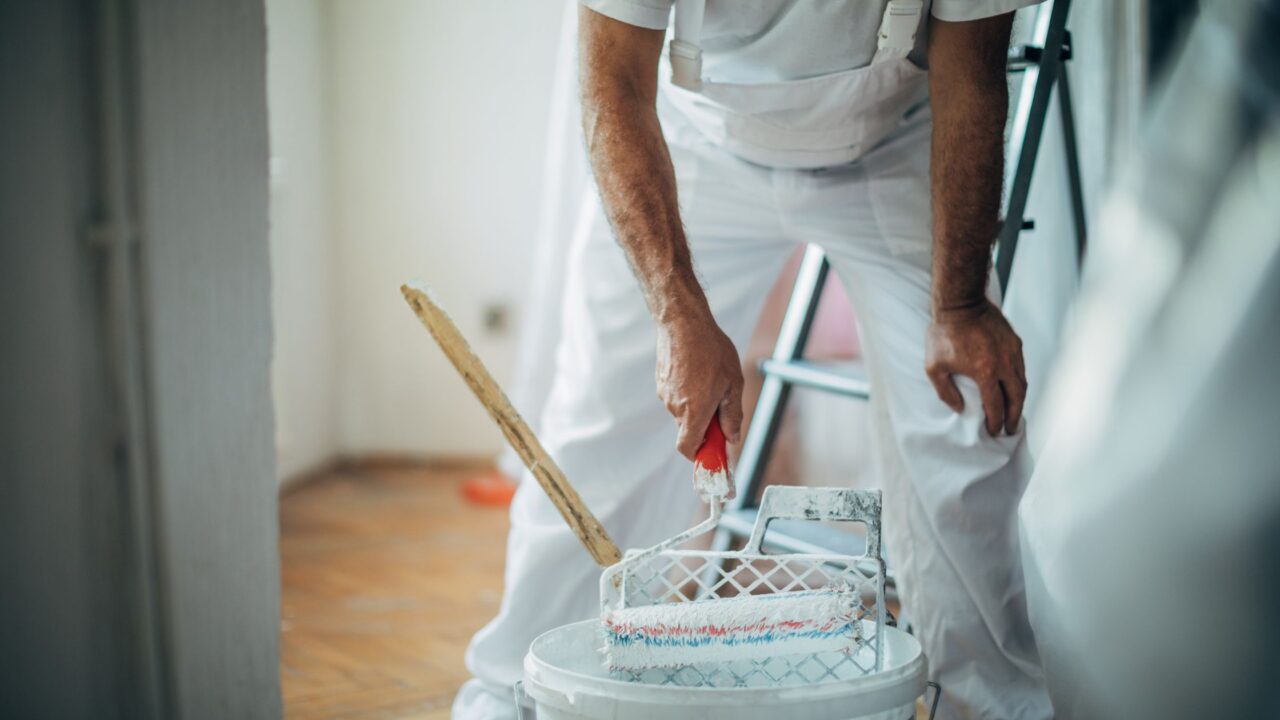Yes — the season makes a big difference for painting projects.
-
Interior painting can be done year-round, but late fall and winter almost always mean better contractor availability and more flexible rates. Because interiors are climate-controlled, you won’t have weather delays, and it’s often easier to book a project quickly.
-
Exterior painting is highly weather-dependent and works best in spring, summer, or early fall when conditions are mild and dry. Trying to paint in cold, wet, or excessively hot conditions almost guarantees peeling, cracking, or uneven coverage down the road.
If you’re planning to sell your home, painting a few weeks before the listing goes live ensures fresh walls, strong curb appeal, and a smoother sales process.
Why Interior Painting Can Happen Anytime
Because the inside of a home is climate-controlled, you can refresh walls in any season. In fact, winter is often one of the best times to schedule interior work. Painters’ calendars tend to be lighter after exterior season winds down, so you can secure faster scheduling and sometimes better pricing.
Cooler months also give homeowners a chance to focus on indoor upgrades while outdoor projects naturally slow down. Many realtors recommend painting interiors in the off-season so your home is ready to list when spring buyers flood the market.
That said, humidity and ventilation still matter.
-
In the summer, excess humidity can extend drying times and affect the finish.
-
In the winter, cracked windows or box fans are sometimes needed to circulate air and reduce odors.
-
Low- or zero-VOC paints make painting safer for families and pets year-round, especially if ventilation options are limited.
Why Exterior Painting Is Seasonal
Exterior paint is designed to withstand weather, but applying it under the wrong conditions undermines its durability. Most manufacturers recommend:
-
Temperatures between 50°F and 85°F
-
Low humidity
-
No rain for at least 24 hours
In Northeast Ohio and similar climates, this usually means May through September is the sweet spot. Early fall can also work well, as long as overnight lows don’t dip too much.
Problems with painting outside the right season:
-
Cold weather prevents paint from curing, which leads to peeling or cracking.
-
Excessive heat or direct sun can cause paint to dry too quickly, leaving brush marks or uneven sheen.
-
High humidity creates tacky surfaces and prevents paint from bonding to siding or trim.
For best results, homeowners should aim to schedule exterior projects during long, dry stretches — ideally with moderate temperatures and stable forecasts.
Cost and Scheduling Advantages by Season
-
Peak season (spring through early fall): Painters are busiest with exteriors, which means tighter schedules, longer waits, and less room for negotiating price.
-
Late fall and winter: Painters often lower rates for interior work to keep crews busy. Scheduling in this window not only saves money but also allows you to get ahead of spring projects.
For sellers, this seasonal advantage is huge. Interior touch-ups in the winter ensure your home is market-ready when buyer activity ramps up in spring. Exterior paint, done at the first weather window in spring, makes curb appeal pop for drive-bys and open houses.
FAQ
Q: Can I paint outside in the winter?
Not usually. Cold weather prevents paint from adhering and curing properly. Some specialty paints claim to work in temps as low as 35–40°F, but they carry higher risk and often don’t last as long.
Q: What’s the best month for exterior painting?
Late spring through early fall, when temperatures are mild and weather is stable. In Northeast Ohio, May through September is ideal.
Q: Do professional painters offer winter discounts?
Often, yes. Many contractors lower rates for interior work during slower months, making it a smart time to schedule.
Q: Is humidity a problem for painting?
Yes. High humidity slows drying and can lead to uneven results. Both interior and exterior projects benefit from mild, dry days.
Q: How long does exterior paint need to dry before it’s safe from rain?
Most paints require at least 4–6 hours of dry weather, but manufacturers typically recommend a 24-hour rain-free window for full curing.
Q: Can I paint on cloudy days?
Yes — in fact, cloudy days can be better for exteriors than full sun. Overcast skies prevent paint from drying too quickly, which helps avoid lap marks and sheen issues.
Q: Should I paint in the morning or afternoon?
For exteriors, mid-morning to early afternoon is usually best. Morning dew needs to evaporate before painting, and late afternoon risks paint not curing before temperatures drop.
Q: What if I need to sell my home in winter — should I wait to paint?
Not at all. Interior painting is perfectly fine (and often cheaper) in the winter. For exteriors, focus on interiors first and plan curb appeal updates as soon as spring weather allows.
Q: Does the type of paint matter by season?
Yes. Some latex paints are formulated for cold weather, while others are meant for high-heat durability. Always check the label for temperature and humidity ranges before applying.
Q: Can I run the furnace or AC while interior painting?
Absolutely — in fact, controlled climate helps paint cure more evenly. Just avoid blasting heat or AC directly at freshly painted surfaces, and use fans to circulate air gently.
Q: How far in advance should I schedule painters?
During exterior season, book 4–8 weeks in advance. For winter interior projects, a week or two is often enough. If you’re preparing a home for sale, aim to complete painting at least 2–3 weeks before listing to allow time for touch-ups and staging.

